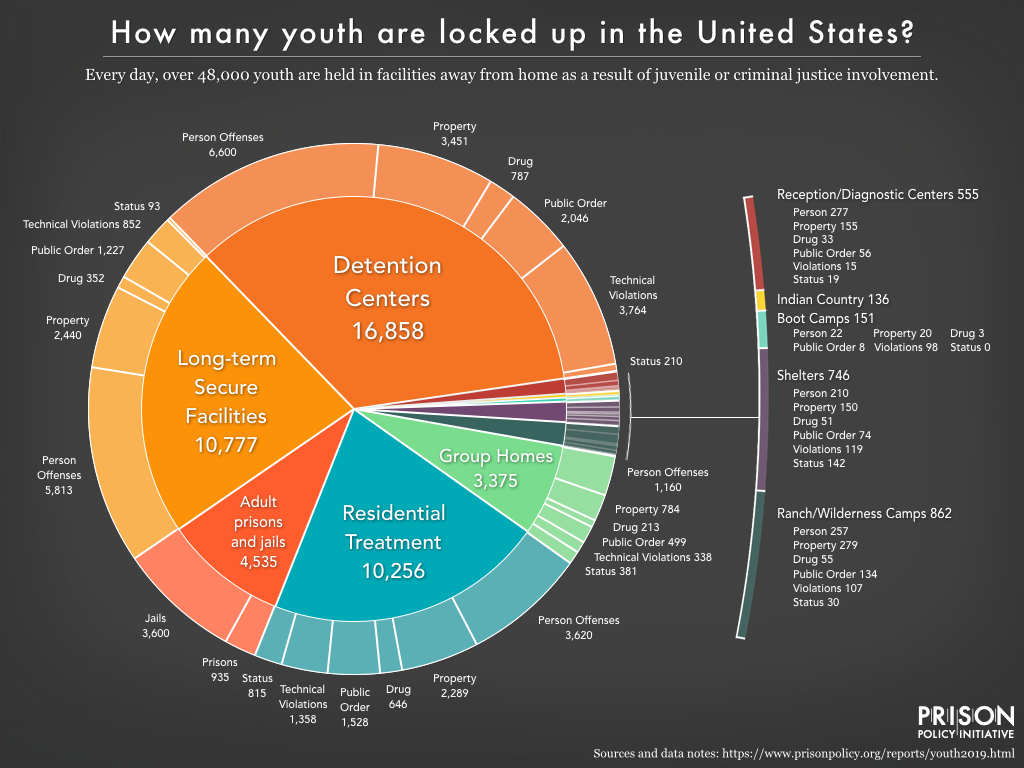New report, Youth Confinement: The Whole Pie 2019, breaks down where children and teenagers are locked up in the U.S., where, and why
At a time when cutting the adult prison population by 50% seems radical to many people, states have already cut the number of confined youth by 60% since 2000.
December 19, 2019
Why are 48,000 children and teenagers locked up in the United States, and where exactly are they? How are the juvenile justice system and the criminal justice system similar, and how are they different? In a new infographic and report, the Prison Policy Initiative answers these unexpectedly difficult questions about youth confinement.
Youth Confinement: The Whole Pie 2019 reveals failures in the juvenile justice system that mirror failures in the adult system, including:
- Unnecessary pretrial detention. On any given day, 9,500 youth – or 1 in 5 youth in confinement – are locked up before trial.
- Incarceration for the most minor offenses. 19% of youth in juvenile facilities are locked up for “technical violations” of probation or parole, or for status offenses (behaviors for which an adult would not be prosecuted).
- Glaring racial disparities. While only 14% of children under 18 in the U.S. are Black, 42% of boys and 35% of girls in juvenile facilities are Black.
But the number of youth in confinement is also falling dramatically. “At a time when cutting the adult prison population by 50% strikes many people as radical, states have already cut the number of confined youth by 60% since 2000, and that trend is continuing,” said report author Wendy Sawyer. The report describes state reforms that have helped shrink the juvenile justice system, such as:
- Reducing incarceration for certain offenses, including status offenses, technical violations, and misdemeanors
- Closing large detention facilities and developing new community-based supervision and treatment programs
- Limiting the amount of time youth may be incarcerated or under court supervision
“States have reduced youth incarceration without seeing an increase in crime, which is very encouraging, but there are still far too many youth in confinement,” said Sawyer, “Today, there are 13,500 youth locked up away from home for drug possession and low-level offenses, not to mention 7,000 other youth detained before trial. That means this country still has a lot of work to do.”
For the full report and more infographics, see https://www.prisonpolicy.org/reports/youth2019.html.




